








THEIR MOST POPULAR OPIMIAN WINES

P14 FUEGO BLANCO
FUEGO BLANCO VALLE DEL SILEX, MALBEC, VALLE DEL PEDERNAL CUYO, 2017, LOT 2300, P15

P30 VIÑA LA ROSA
CORNELLANA RESERVE
CARMENERE CACHAPOAL VALLEY PEUMO, 2018, LOT 2330, P29
CELLAR 282 — QUEBEC

P36 ANTIYAL
PURA FE CARMENERE MAIPO VALLEY ANTIYAL, 2018, LOT 2337, P37

P18 BODEGAS Y VIÑEDOS MAURICIO LORCA
TEMÁTICO ARGENTINO JOVEN TORRONTÉS, LA RIOJA, 2019, LOT 2304, P19

P24 FINCA FERRER
ACORDEON MALBEC
ESTATE GROWN GUALTALLARY, 2018, LOT 2317, P25

P40 LAS VELETAS
LAS VELETAS PETIT VERDOT CABERNET FRANC VALLE
DEL MAULE, 2018, LOT 2345, P41

P42 VIÑA ECHEVERRÍA
PROPUESTA CURICO VALLEY, 2018, LOT 2356, P46
cover —Maverick Chilean winmaker Alvaro Espinoza of Antiyal practices biodynamic viticulture and winemaking.

DELIVERY WILL BE SUMMER 2021
PINOT BLANC RÉSERVE, AOC ALSACE, 2018, LOT 2288, P11

CASABLANCA VALLEY, 2018, LOT 2363, P51 P8 CAVE VINICOLE DE HUNAWIHR
Cellar Offering 282 covers three geographies: Alsace, Chile and Argentina. All three have a strong mountain influence. The Alsace region in the north of France is sheltered by the Vosges Mountains, making it one of the sunniest and driest in the whole of France despite its northerly position, close to the border with Germany.
The Andes mountain range is one of the world’s longest, at 7,000 kilometres. It serves as both a geographical and a physical boundary between Argentina and Chile. On the east side is Argentina with Mendoza City, the heart of the country’s wine industry. Argentinian vineyards are mostly situated at more than 1000 metres in altitude. This high elevation means exposure to intense sunlight during the day as well as dramatic shifts in temperature between day and night. As a result, the vines produce thicker skinned grapes, concentrated in flavour and phenolic anthocyanins and tannins producing deeply coloured, ripe but soft wines. Malbec is the most popular variety, but many other varieties do well in these conditions too.
Across the Andes from Mendoza lies Chile’s capital city Santiago. Chile’s wines are influenced not only by the Andes, but also the Coastal range of mountains which protect against the cold ocean air. Vineyards are planted in the foothills of both with the snow-capped mountains providing water for irrigation. Historically, Chile’s vineyards were mainly south of Santiago, they now stretch north and south in the central valley, towards the coast and at higher altitude.
EXPRESION RESERVE PINOT

Every wine offered by Opimian is tasted and selected for its deliciousness and value by our consultant Master of Wine, Jane Masters. Jane has an in-depth knowledge of the world of wine. Her aim is to share her experience and love of wine with members in an easy and informal manner. She is one of 409 Masters of Wine worldwide and was elected Chairman of the Institute of Masters of Wine 2016-2018 by her peers.
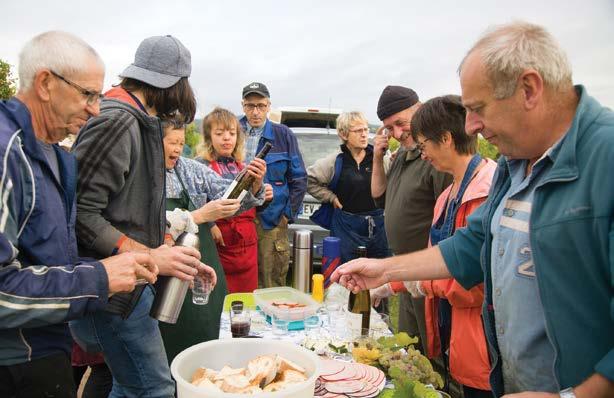
Michael Lutzmann and Greg Rinehart,
Opimian Co-Managing Directors
One of the many joys of being a Member of Opimian, as we both have been for many years, is the creation of connections around the globe.
One of the many joys of being a Member of Opimian, as we both have been for many years, is the creation of connections around the globe. We have been fortunate to have met the incredible people behind the wines we enjoy at Opimian. Many of you will have also met our partners on your own journeys or when they have come to Canada to give us all a taste of what they have to offer.
Whether or not that is true for you, you will have an opportunity to know several of them better within these pages. Articles on Lorca, Cornellana and Antiyal reveal the passion and expertise each of these producers bring to their craft. In addition, Jane’s article on Natural Wines will give you more insight into the growing trend for this winemaking style. Fad or fashion? Only you can decide.
In this, our third Cellar Offering of the 2021 Season, you will notice a consistent trend. We are providing you with more suggestions for wine selections. With Directors’ Cut and Jane’s Coups de Cœur, you’ll discover our picks that just might become your favourites as well. In the Cellar Up feature, you can learn how to diversify your collection with the many wine styles available.
You can now count on finding the top value wines in the centre spread of the Cellar. These everyday drinkers continue to be a popular part of the Opimian product mix. On the other end of the spectrum is the Collector’s Corner that you will find on the inside back cover spread. Rare and unique wines and spirits that are suitable for special occasions.
Thank you all for sharing the joy of wine with us. We wish you and your families the best of health.
Michael & Greg
MICHAEL’S PICKS



GEWURZTRAMINER

GREG & MICHAEL’S PICKS FOR THIS CELLAR OFFERING


GREG’S PICKS




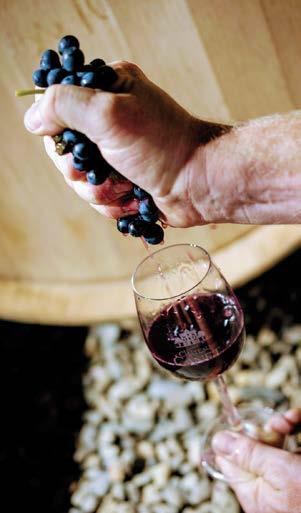
JCV CHARLIE VILLARD
RAMATO PINOT GRIGIO, CASABLANCA VALLEY, 2019, LOT 2368, P53


EL BARRIO CABERNET
SAUVIGNON, CURICÓ VALLEY, NATURAL WINE FROM CHILE, LOT 2357, P47
Jane Masters MW is Opimian’s Master of Wine
In recent years, you may well have noticed an increasing use of the term “natural wine”. But what does this term mean? Unfortunately, there is no standard definition and means different things to different winemakers. Rather it is a philosophy for minimal intervention in the vineyard and in the winery and has much in common with organic and biodynamic wine production.
There is also an overlap between natural and orange wines. These are made from white grapes fermented on grape skins in the same way as red wines are made - in other words, a winemaking technique. Many orange wines are made naturally but not all. By the way, the name refers to the resulting wine colour – there is not a sniff of an orange or any other citrus in sight!
I actively support working in keeping with nature, but I do take issue with some of the myths and communications around “natural wines”. When I was last in Australia five years ago, a group of Mornington Peninsula winemakers insisted that their wines simply “made themselves”. This is hogwash. Wines do not and cannot “make themselves”. Someone has to prune and tend to vine, if not they grow wild and rambling and produce lots of vegetation and very few grapes. Someone must decide when and how to pick the grapes and someone has to decide what fermentation vessels to use, how long to macerate on skins, when to bottle and many other winemaking decisions. Man plays a role in the production of any and all wines, albeit to a greater or lesser extent.
For any wine, the most important qualities for me are its flavour, structure and balance. There are good natural wines but just because a wine is “natural” doesn’t mean it tastes good. I am sad to say that more often than not natural wines I taste are faulty with dominating aromas of cheese, vegetal notes or brown apples often accompanied by a thin sour palate.
It takes skill to produce good natural wines with the best natural winemakers are those that understand the fundamentals of winemaking. However, I am afraid there are others for whom the concept of natural is more important than the quality of the wine they produce, use it as an excuse for taking a laissez-faire approach to winemaking or who are reacting to a consumer marketing trend rather than a being a true proponent.
I suspect there is a perception that natural wines are better for us. But is this really the case? Wines do not contain large amounts of “nasties” – the most important one being alcohol (and if you overdo it there are consequences). Wines contain hundreds of flavour compounds produced by yeast during fermentation. Commercial yeasts are selected to ensure a smooth fermentation and enhanced flavours. Natural wines are fermented by native

yeasts so the winemaker has no control and these can produce higher levels of biogenic amines such as tyrosine, histamine (although levels are still lower than certain cheeses, dried meats and pickles). True, organic and natural wines have lower levels of added sulphites but gone are the days of belts and braces sulphur additions. Sulphites protect wine against oxidation and microbial spoilage ensuring it arrives in our glass in tip top condition. Natural wines are not filtered or fined appearing cloudy and contain higher levels of microbes and proteins making them less stable in bottle hence prone to off flavours.
Minimizing our impact on the environment is important. Natural winemakers often use organically or biodynamically grown grapes and encourage biodiversity in the vineyard. But organic viticulture in regions with high humidity can be more harmful to the environment than conventional viticulture due to the amount of organic copper treatments required which can lead to soil toxicity. Increased numbers of spray treatments increase the amount of diesel used by tractors, hence carbon emissions and can lead to soil compaction. So once again it’s not clear cut.
I love the ideal of natural wine, but when evaluating any wine I take the same rigorous approach. An allowance is not and should not be made because a wine is “natural”. Having said that, I am pleased to say that there are some delicious examples. Indeed, in this Cellar Offering, Alvaro Espinosa at Antiyal is one of the most gifted biodynamic winemakers, Jean-Charles Villard is making some textured natural Orange wines from Semillon and Pinot Gris and there is a 2020 natural Cabernet Sauvignon produced by Roberto Echeverría

CORNELLANA RESERVE CARMENÈRE, CACHAPOAL VALLEY, 2020, LOT 2330, P29


ACORDEÓN MALBEC, ESTATE GROWN, GUALTALLARY, 2020, LOT 2317, P25
KUYEN, VALLE DEL MAIPO, 2019, LOT 2339, P39


LAS VELETAS CABERNET SAUVIGNONCABERNET FRANC, VALLE DEL MAULE, 2018, LOT 2344, P40
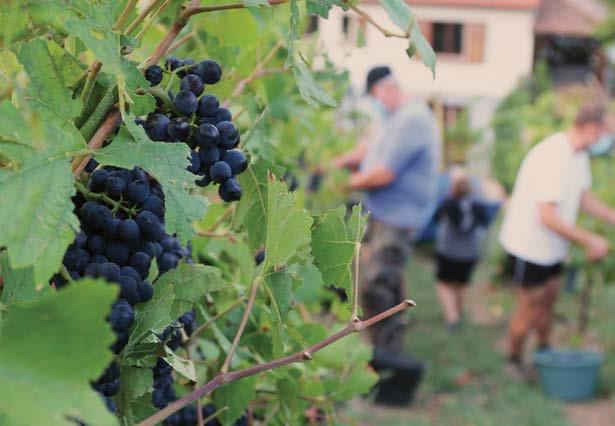
The picturesque village of Hunawihr, in the heart of Alsace, is surrounded by gentle slopes planted almost entirely to vineyards with the Vosges Mountains as its backdrop. The climate is sunny and dry thanks to the protection provided by these mountains. Located close to the border with Germany, Alsace sits on a fault line and has extremely varied soils. The region specializes in white wines made from grape varieties more commonly found in Germany than other areas of France, the warm sunny climate producing more natural sugar in the grapes and riper wine styles.

2289 RIESLING RÉSERVE, AOC ALSACE, 2019
Riesling
$ 26.00 $ 156.00
Spices, honey and beeswax aromas complement green apple notes. A touch of sweetness and flavours of limes, peaches and apricots are complemented by a crisp acidity. Fermented in tank, it was matured on yeast lees 4-6 months.
Classic choucroute au poisson with a creamy


DISCOVER THE RIESLING LIEU-DIT MUEHLFORST ONLINE, LOT 2297
$ 31.00 $ 186.00
With Alsace specializing mainly in white wines, Pinot Noir is the only permitted red grape in the appellation. Vanilla and coconut aromas lie over a red cherry background and lead to a supple palate. This is a light- to medium-bodied Pinot Noir with nice mid palate, ripe tannins and subtle fruit flavours.

Typically Alsace in style, it has a big broad structure; it is sometimes difficult to believe that this is the same variety used in Italy to produce lighter styles of Pinot Grigio. Aromas of orange blossom are followed on the palate with sweet orange and mandarin flavours. Refined, it has an elegant racy acidity.
and pork
2288 PINOT BLANC RÉSERVE, AOC ALSACE, 2019
Pinot Blanc
$ 25.00 $ 150.00
2021-2022, M8 D9
Nectarine, honey 5°C
Mandarin, [D] 13%

2291 GEWURZTRAMINER RÉSERVE, AOC ALSACE, 2019
Gewurztraminer

The aromatic Gewurztraminer grape has lots of floral notes with orange blossom, rose petals and Turkish delight. This is a smooth wine with residual sweetness giving it weight and richness offset perfectly by a bitter marmalade and citrus-pith finish. It is a flavoursome wine which lingers on the palate.

2021-2023, M8 D9
White fruits, nectarines and honey aromas lead to a ripe-fruit palate with more nectarine and mandarin flavours. This is a delicate wine, smooth and easy drinking with just a touch of sweetness.
More mineral in nature than the Réserve, Cuvée Prestige Riesling has aromas of yellow plums, wet stone and aniseed. The succulent mid-palate fruits are followed by sour plum and greengage flavours giving depth and length of flavour.
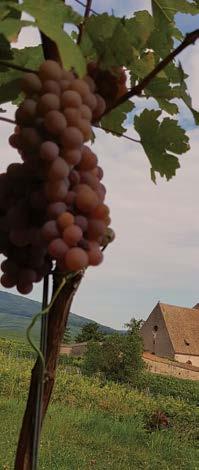



More tightly wound, this Grand Cru Riesling will repay with some cellaring. It is complex with mixed lemon and mandarin citrus, fresh apples, honey and pistachio aromas. An elegant wine with more flavours of apples and pears emerging and persisting on the palate. Osterberg Grand Cru is located in the neighbouring village of Ribeauvillé on stony, clay slopes.

Pears, apples, [D] 13%
Veal medallions with morels in a cream sauce
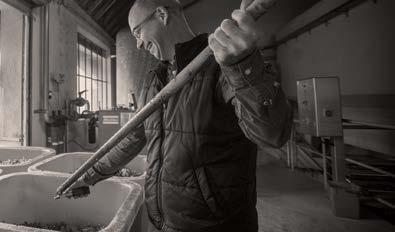
30.00 $ 180.00
Pale salmon pink with an intense fruity nose, peardrops and raspberry aromas lead to a soft smooth palate with nice acidity. It is medium bodied, leading to some citrus pith on the finish, giving length.
Shielded by the Massif des Vosges, Alsatian vineyards enjoy the driest climate in France and a late-season sunshine, perfect for a slow and prolonged maturation of grapes. But they also benefit from the exceptional diversity of the vineyard soils, a mosaic of terroirs scattered over 170 kilometres. This is the Alsace wine route.
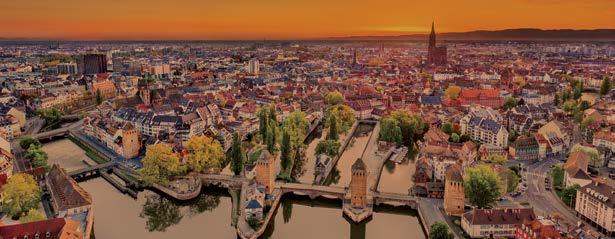
The beginnings of Alsatian winemaking date back to the Romans, in the first century B.C. At that time, water was rarely safe to drink, so it was less dangerous to drink wine...what a good excuse!
A favourable climate and soil are not enough to produce exceptional wines. Add to this a good dose of know-how and a ample amount of manpower! Alsace has always been a populated region, a crossroads of ideas in Europe.
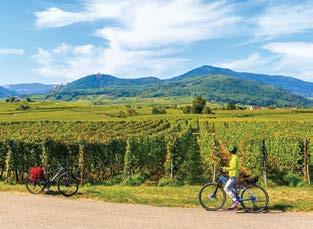
This cycling route will take you to a multitude of postcardworthy landscapes, and you will cross no less than fifty AOC Alsace Grand Cru terroirs. Above all, you will meet winemakers eager to share with you their history, their passion and their love of the land.
Alsace is the only vineyard in France to showcase its grape varieties, with stars such as Riesling (21.8% of the vineyard area), Pinot Blanc (21.2%) and Gewurztraminer (20.4%). The vineyard has 4 types of appelations: AOP Alsace, AOP Alsace Grand Cru, Crémant d’Alsace and finally for sweet and syrupy wines, the Vendanges tardives (VT) and the Sélections de grains nobles (SGN).
Alsatians will tell you, their wine qualifies as “angel’s pee” ! This Alsatian expression is used to signify a superb wine!
During your trip to Alsace, you will not want to miss the iconic city of Strasbourg, a UNESCO World Heritage site and the European capital, and its historic city centre. The emblematic gothic cathedral founded in 1015 was the largest building in the world for two centuries once its spire was built.
The foodie in you will not want to leave Alsace without having enjoyed sauerkraut in a Winstub (Win means wine and stub means heated room). A true Strasbourg institution, these traditional eateries will give you a true taste of the local culture. Why not pair it with a local craft beer? After all, Alsace is also the most important brewing region in France!
GRIS ROSÉ, AOC ALSACE, LOT 2293, P11


CALIXTE 5 CRÉMANT D’ALSACE BRUT, AOC CRÉMANT D’ALSACE
2296
Characterised by its soft creamy texture, this Crémant d’Alsace has aromas of apple blossom and custard with a hint of nectarine. It is supple with ripe peach and lemon flavours. Made from Pinot Blanc, the base wine was fermented in oak barrels.
2021-2022, M8 D9
CALIXTE 5 CRÉMANT D’ALSACE BRUT ROSÉ, AOC CRÉMANT D’ALSACE
Pale in colour, the rosé Calixte has aromas of fresh apples, aniseed and fennel with more red fruits showing through on the palate. It is well balanced with a crisp acidity and lingering finish.
CALIXTE 5 CRÉMANT D’ALSACE BRUT $ 34.00 $ 204.00



Fuego Blanco vineyards are in the relatively new wine region of Pedernal in southwest San Juan province. The Millán family, headed up by José Jesús (known as JJ), have planted 100 hectares in this desert region which has an annual rainfall of just 200-250 millimetres. Vineyards are cultivated on slopes of sandy soils with limestone and flint rocks at an altitude of 1,500 metres. Wines are made by Bernardo Bossi Bonilla. The group also own a boutique distillery in Mendoza and make premium spirits.
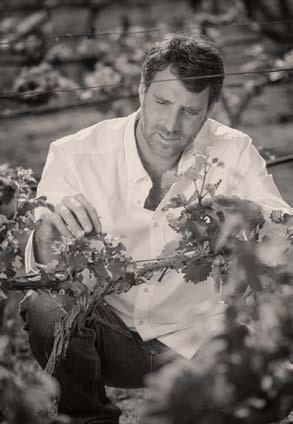

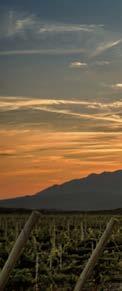
2298
NEW
FUEGO BLANCO VALLE DEL SILEX CONTRAVIENTO MALBEC ROSÉ, VALLE DEL PEDERNAL, SAN JUAN, 2020 Malbec
This rosé wine made from Malbec is a vibrant pink colour. Yeasty aromas complement those of cranberries and precede flavours of crushed redcurrants and cherries. It has a supple mid palate with delicious crisp dry finish.

FUEGO BLANCO VALLE DEL SILEX CONTRAVIENTO MALBEC, VALLE DEL PEDERNAL, SAN JUAN, 2019 Malbec
$ 25.00 $ 150.00 2300

A delicious wine, deep purple in colour with youthful cherry aromas, herbs, fresh grass and vermouth notes. It is medium bodied with a fine texture. A pretty wine with floral Parma violet and other complex flavours, it is long and elegant. 40% of the Malbec grapes were grown at the Pedernal Valley estate at an altitude of 1,500 metres, the balance at lower altitude came from the Ullum Valley, also in the San Juan province.
FUEGO BLANCO VALLE DEL SILEX MALBEC, VALLE DEL PEDERNAL, SAN JUAN, 2018
Malbec
$ 33.00 $ 198.00
Produced 100% from Malbec grown on the Pedernal Valley estate at altitude. 2018 Fuego Blanco Malbec is a medium-bodied wine brimming with flavours. Aromas of red apples and cooked forest fruits lead to a supple palate oozing with dark fruits, cherries and blueberries. Grapes were handpicked in the early hours and sorted at the winery. Fermentation was carried out by indigenous yeasts in concrete egg-shaped tanks. The wine was then matured for eight months in used French oak barrels. The result is a youthful flavoursome wine.

2301

FUEGO BLANCO VALLE DEL SILEX CABERNET FRANC - MALBEC, VALLE DEL PEDERNAL, SAN JUAN, 2018
Cabernet Franc, Malbec $ 37.00 $ 222.00
Starting to show more tertiary aromas with soft leather notes complementing violets and a touch of earth. In the mouth, this is a supple wine with lots more fruit flavours – blueberries, cooked forest fruits and violets – shining through. It is light to medium bodied with a powdery texture and some bitter fruits on the finish. A blend of 60% Cabernet Franc with 40% Malbec, both varieties were handpicked in the early morning and co-fermented in concrete tanks together.
2302
FUEGO BLANCO VALLE DEL SILEX FLINTSTONE CABERNET FRANC, VALLE DEL PEDERNAL, SAN JUAN, 2017
Cabernet Franc $ 47.00 $ 282.00

empanadas
Cabernet Franc is the variety to watch in Argentina. Flintstone 2017 Cabernet Franc is expressive with mellow aromas, vanilla, dark fruits, raisins, undergrowth and sweet tobacco. It is a full-bodied wine with some grippiness on the finish yet has a succulent mid palate with dried fruits and smoky flavours. 70% of the grapes were fermented in egg-shaped concrete tanks, the rest in 500-litre French oak barrels.
Braised pork with pear and apple

CHECK OUT MENDOZA’S PREMIUM PINK GIN BY THE SAME OWNERS, PAGE 54

Prepare these four easy components to create a gourmet meal for two, courtesy of Mauricio Lorca.
Ingredients::
4 medium carrots, divided
• Salt Pepper
300 ml milk
• 1 medium Italian eggplant
60 ml olive oil, divided
1 bunch asparagus
2 medium potatoes, wedged
Sirloin steak (about 8 oz or 225 g per person)
Dry rosemary and fresh for garnish
Directions
Carrot Lactone
• Cook 2 carrots in salted, boiling water.
In blender, add milk and cooked carrots until thick lactonia obtained (puree).
Roasted Babaganoush
• Roast whole eggplant at 450°F until black but not dehydrated.
Process in food processor or blender with skin on and half of olive oil until you get smooth texture
Adjust seasoning with salt and pepper.
Roasted Vegetables
Toss remaining 2 carrots, asparagus and potatoes with rest of olive oil in bowl.
• Place on baking sheet and roast in oven at 400°F for about 45 mins. until browned, turning once.
Steak
Season steaks with salt, pepper and dry rosemary.
• Leave at room temperature for 1 hour.
On BBQ or skillet, cook beef to your liking.
Cover with aluminum foil and let rest on plate for 10 mins to redistribute juices and flavour.
Plate assembly
1. Place babaganoush on one side of dish and carrot lactonia on opposite side.
2. Spread both purees across middle of plate and place steak on top.
3. Finish with roasted vegetables and sprig of rosemary.
SERVE WITH THE ZAPAM ZUCUM MALBEC BY MAURICIO LORCA, LA RIOJA, 2019, LOT 2312, P23

Mauricio Lorca’s winery is in Perdriel in Lujan de Cuyo just 25 kilometres from the centre of Mendoza city. After an impressive career making wines for some of the top Argentinian names, Mauricio established his own vineyards and winery in 2002. He planted vineyards in Vista Flores, in the Uco Valley, at altitudes over 1,000 metres with high planting densities of 6,850 vines/hectare that were unheard of in the region at the time. His wines are fresh and tight and many have a surprising capacity for cellaring.
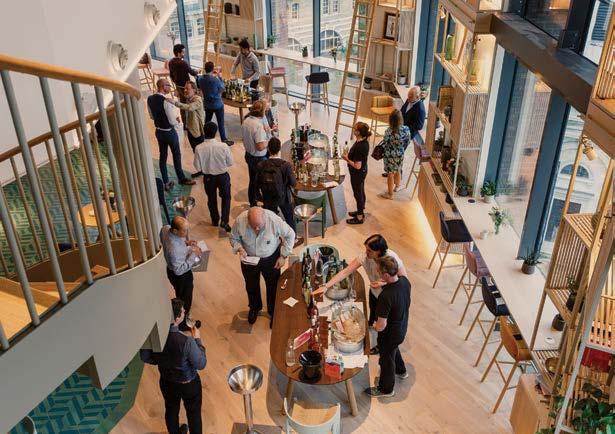

TEMÁTICO ARGENTINO JOVEN CABERNET SAUVIGNON, VALLE DE UCO, MENDOZA, 2020
Cabernet Sauvignon

Torrontés is Argentina’s speciality white grape and is most famously associated with the more northern La Rioja region. Grown at 1,800 metres, the vines produce grapes bursting with flavour. The 2020 is less aromatic than previous years yet still displays plenty of floral aromas together with those of sherbet lemons. The palate is light with a crisp acidity showing no signs of its 13.5% alcohol. Perfect with spicy food.

A light- to medium-bodied Malbec with candied fruits, raisins and mulberry aromas. Some dried fruit flavours continue onto the palate and lead to a supple finish. While a component of the wine sees some oak maturation, there is no obvious oak character.

A dense and savoury wine, it has aromas of black olives and treacle. It is fine in texture with silky tannins. Flavours of black fruits emerge on the palate and persist giving a long finish. The high elevation of the vineyards in Argentina exposes the vines to intense sunlight as well as dramatic shifts in temperature between day and night. As a response, the vines produce grapes with thicker skins, concentrated aromas and lots of soft ripe tannins.
2307

LORCA FANTASÍA EL MIRADOR PEDRO XIMÉNEZ, RIVADAVIA, MENDOZA, 2020
Pedro Ximénez
$ 24.00 $ 144.00
Pedro Ximénez is a grape variety commonly found in the south of Spain where it is most often used to produce highly sweet and dark rich wines and sherries. It was also widely planted in Argentina and, until recently, used to make pretty simple dilute table wines –but it is now creating a bit of a stir. Mauricio sourced grapes from the Rivadavia region in the east of Mendoza province. On the nose, it has subtle floral aromas with earth, honey and raisins. With a relatively low alcohol at less than 10%, its sweetness gives it some weight and is balanced by a fresh lemon acidity and flavours of fresh pears.
2021-2023, M8 D9
Earthy, honeyed spices, raisins 6°C
Lemon, pears, floral, [SS] 10%
Dark chocolate tart
2308 LORCA ML FANTASÍA MALBEC, VALLE DE UCO, MENDOZA, 2020
Malbec
$ 27.00 $ 162.00
Cooked and dried fruits, raisins with a touch of calfskin and puppy-dog smell. It is supple, medium bodied with a fine texture and flavours of dates, figs and sour cherries.
2021-2024, M8 D8
Cooked and dried fruits, raisins 18°C
Figs, dates, cherries 13.5%
Oven-roasted beef with a tomato sauce

GET THESE TWO WINES AS A PERFECT DUO FOR SUMMER SIPPING AND BBQ


MAURICIO LORCA ML ÓPALO MALBEC, FINCA LOS INICIOS, VALLE DE UCO, MENDOZA, 2015
Malbec
Tapenade, black fruits, raisins and floral notes lead to a soft ripe palate. It is supple and medium bodied with a long floral finish and some grip. 2015 saw more rainfall in Vista Flores than usual, and a cooler vintage meant green pruning and defoliation were the order of the day to ensure grapes fully ripened. Harvest was 15 days later than average.
and garlic
TWO BOTTLES EACH 2015, 2017, 2019
2311 MAURICIO LORCA ML ÓPALO MALBEC
$ 37.00 $ 222.00
Mauricio was one of the first winemakers to produce premium Malbec wines with no use of oak. All the focus is on the quality of the fruit. This case has three Ópalo wines coming from vintages with quite different growing seasons.
MAURICIO LORCA ML ÓPALO MALBEC, FINCA LOS INICIOS, VALLE DE UCO, MENDOZA, 2017
Malbec
More weighty than the 2019, it is also more savoury with aromas of plums and black olives. It is medium bodied with floral blueberry flavours and a grainy texture. A late spring frost caused vines heterogeneity in the vineyard, requiring debudding and other vineyard work to produce a quality crop.
2021-2024, M8 D9 Black olive 18°C
Blueberries, floral 14%



MAURICIO LORCA ML ÓPALO MALBEC, FINCA LOS INICIOS, VALLE DE UCO, MENDOZA, 2019
The 2019 is intense with floral notes of peonies over blackberries and blueberries, with a touch of soft leather behind. Quite light mid palate, it has a red berry acidity with some grainy tannins and astringent finish. Mauricio’s favourite vintage of the three, it was an almost perfect growing season requiring little input.
Peonies, blackberries, blueberries 18°C Red fruits, touch leather 14%
Pan-roasted rabbit loin with lingonberry gastrique


A medium-bodied Cabernet Sauvignon, approachable with succulent fruits and lots of flavour. Rich and concentrated, aromas of violets, blueberries, blackberries and smoke are abundant.

Ripe blackcurrants and other black fruits mix with aromas of wet stone and earth. ML Syrah is medium bodied with a silky texture and fine tannins. Floral flavours come out on the palate with a hint of leather and a redcurrant finish adding interest.
An organic Malbec grown at Vichigasta in La Rioja province. This is one of the driest wine growing regions in Argentina – and they are all pretty dry! Soils are very deep, daytime temperatures reach 35-40°C during summer and drop to 20°C at night. It is a windy region and this combined with just 150 millimeters of rain each year keeps organic grapes healthy. Zapam Zucum in local legend is a spirit in the form of a voluminous woman with black eyes and cascading dark hair who lives in the shadows and watches over the fruit on the vines. The 2019 is a medium bodied wine with aromas of Christmas cake, molasses, all spice and some red fruit. It has a pure linear structure with vibrant red fruits and a sour cherry finish, ripe tannins and persistence in the mouth.
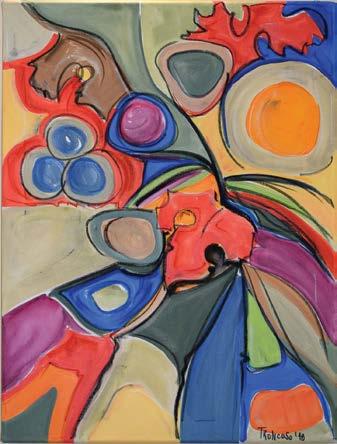

ENJOYED LAST YEAR’S DISCOVERY CASE? CHECK OUT MORE LORCA WINES ONLINE, LOTS 2213-2215
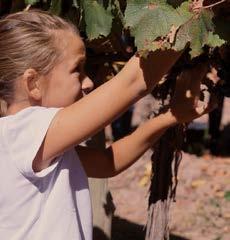

Located in one of the most exciting sub-regions of the Uco Valley, Gualtallary in Tupungato, Finca Ferrer sits above 1,300 metres and enjoys bright clear skies with more than 300 sunny days a year. The climate is strongly influenced by the Andes and sits somewhere between that of Bordeaux and the Rhône in terms of growing degree-days. The sandy rocky soils have a very high limestone content producing distinctive wines. Jose Ferrer Sala established the estate in 2003 and has 60 hectares of vines with wines made by Marcos Gutila. New to Opimian last year, these wines are every bit as good as last season.

Spicy oaky aromas slightly dominate the more delicate fragrance of white fruits.

An immediate favorite, this wine has intense blackberry and blueberry fruit. It is medium bodied with juicy blackcurrant flavours. Quite simple, but concentrated with a good balanced acidity, length and structure.
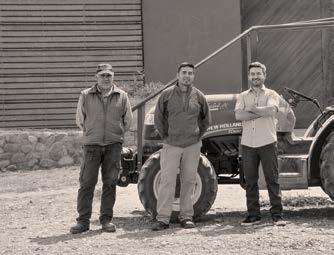
Cabernet Sauvignon $ 29.00 $ 174.00
Blackcurrants and blackberries with a touch of creosote lead to a smooth full-bodied wine. It is structured with some chewy tannins and a balsamic character giving it a flavoursome rustic style.


2320
2321 FINCA FERRER SYRAH, ESTATE GROWN, GUALTALLARY, 2018

Wild herbs, lavender and scrub combine to create a savoury aroma. This Syrah is medium bodied with some chewy tannins and a firm finish. Grapes were hand harvested and fermented in stainless steel tanks with no use of oak.

A star Malbec, it is a youthful and deep purple. Aromas of blueberries, ripe blackberries, vanilla cream and oak spices are all present. It is medium bodied with generous and complex flavours of blackberries and oak which continue to linger on the palate. After fermentation, the wine was oak matured, 10% in French oak barrels for 11 months, 90% with French oak staves for five months.

$ 35.00 $ 210.00
Nice floral notes of lavender and violet mix with sweet vanilla and pâtisserie aromas. It is supple, medium bodied with a juicy acidity and lots of mellow oaky spice notes. The oak is a little more dominant than the Malbec but complements well the black and bitter cherry flavours. This is a concentrated wine, fine in texture and is irresistibly moreish. Delicious now, it has the potential for keeping: 2018 was an exceptional harvest.
and zucchini en papillote

2322
FINCA FERRER, COLECCIÓN

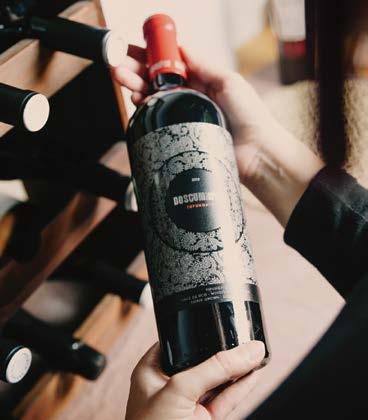
Restrained in nature, it has mellow moody fruit aromas of mulberries, crushed blackberries and dates with savoury spices and a touch of soft leather. Linear in structure, it is a textured wine with powdery tannins and flavours of plums and vanilla. Not yet at its optimum for drinking, it will continue to develop. As you might guess, Malbec is the most planted variety on the estate. For this wine, selected Malbec grapes came from a single vineyard block known as “a6” with a small number of bottles produced. Matured in French oak barrels for 14 months.
2323
DOSCUMBRES, ESTATE GROWN, GUALTALLARY, 2015
Malbec, Cabernet Sauvignon, Tempranillo, Tannat

Perfumed floral notes, rose petals and blueberries continue onto the palate. This is a medium-bodied wine with supple tannins and a juicy acidity. More crushed strawberries and redcurrants come through on the palate with vanilla and caramel. Aged for 18 months in barrel.
Mixed asado of beef, pork, sausages

Baby pink in colour with banana, talc and rose petal aromas. It is light and crisp on the palate with some blackcurrant cordial, fresh apple and citrus.



Plums, spice and chocolate aromas are appealing. This is a fine-textured wine, smooth as velvet with elegant tannins and lingering flavours of red cherries and raspberries. Produced from a blend of 60% Cabernet Sauvignon and 40% Carmenère.

Not as explosive in flavour as some previous vintages, the 2020 Sauvignon has appealing lemon and lime aromas. It is supple and smooth with fresh white fruit flavours.


An instant Coup de Coeur, 2020 Reserve Carmenère is perfumed with floral notes, redcurrants, blackcurrant juice and dark fruits. On the palate, it is elegant with depth, sweet red berry fruit flavours and a fine texture. A tangy acidity and lingering cherry and berry flavours persist in the mouth.
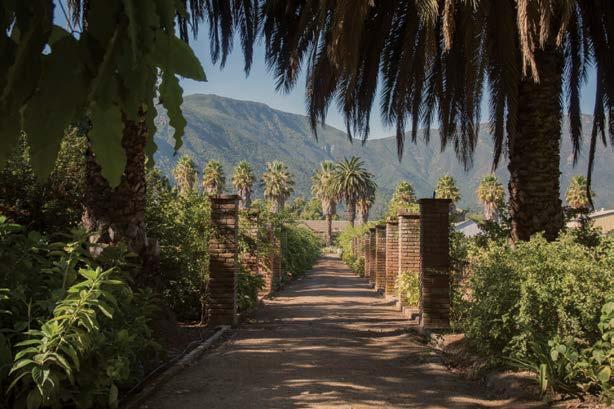
CACHAPOAL VALLEY, RAPEL
Based in the Cachapoal Valley, close to Peumo, Viña La Rosa is one of the oldest wine estates in Chile. The winery owns 680 hectares in the Peumo zone, recognized as being one of the top sites for growing Carmenère due to its long and consistent ripening season. This is because the valley is protected, sitting behind the coastal mountain range which protects against cold moisture-laden air coming from the Pacific. Rainfall during the growing season is next to zero allowing late-ripening Carmenère to slowly ripen without pressure on the winemakers to harvest. Granitic colluvial soils in the Cornellana vineyard are exceptional for black grapes. All wines are suitable for vegans.
2324
CORNELLANA CHARDONNAY BRUT SPARKLING WINE, CACHAPOAL VALLEY, 2020
Chardonnay
$ 22.00 $ 132.00

Subtle stone-fruit aromas of peaches, nectarines and mango follow through onto the palate. Everyday bubbly, fresh fruits with a nice acidity and crisp dry finish.
2328 CORNELLANA RESERVE ROSÉ, CACHAPOAL VALLEY, 2020
Cabernet Franc, Syrah, Pinot Grigio, Pinot Noir
$ 21.00 $ 252.00
Nicely aromatic with pomegranate, cherries and rosehip flavours, a supple mid palate and crisp finish. It was produced from quite an unusual blend of grape varieties: Cabernet Franc, Syrah, Pinot Noir and Pinot Grigio.


2326

CORNELLANA MERLOT, CACHAPOAL VALLEY, 2020
Merlot
$ 17.00 $ 204.00
Plums and violet aromas lead to soft medium-bodied wines, quite light mid palate with sweet fruits flavours and a bitter cherry character giving length on the finish.
2327 CORNELLANA RESERVE CHARDONNAY, CACHAPOAL VALLEY, 2020
Chardonnay $ 21.00 $ 252.00

Honey, jasmine blossom, peaches and oak contribute to a fragrance with lots of appeal. Soft and smooth on the palate, ripe pineapple and lemon curd flavours emerge. This is a more weighty wine with lingering oaky notes.
2329 CORNELLANA RESERVE PINOT GRIGIO, CACHAPOAL VALLEY, 2020
Pinot Grigio $ 21.00 $ 252.00

M8 D9 Honey, oak, jasmine, peaches
Pineapple, lemon curd, [D]
Seared foie gras
Fresh apples and pears with a touch of quince aromas precede a smooth white wine. More quince flavours come through on the palate leading to a crisp lemon citrus acidity.
Mushroom caps stuffed with sweet and spicy sausage

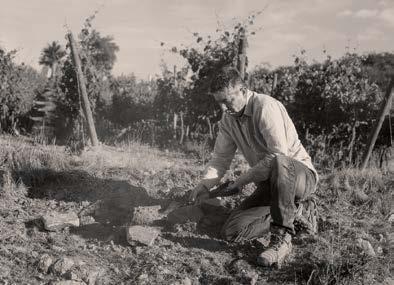
VIÑA LA ROSA IS ALWAYS A MEMBER FAVOURITE, AND FOR GOOD REASON!


Red apple and cherry aromas are complemented by a hint of graphite. This is a medium-bodied wine, quite tight at the time of tasting, with a firm acidity and supple tannins giving structure.
2332
NEW
CORNELLANA WINEMAKER’S SELECTION SPECIAL RESERVE PINOT NOIR, CACHAPOAL VALLEY, 2019
Translucent ruby in colour, this Pinot Noir has smoke and earthy notes over a red cherry background. More red berry fruits, raspberry and cranberry come though on the palate. It is supple with a vibrant acidity and red apple finish. Part matured in old French oak barrels.

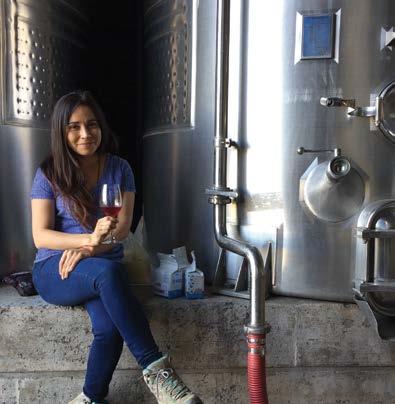
Meet Cynthia Ortiz, a member of the Viña La Rosa winemaking team from the Cornellana Estate. As a young woman winemaker, Cynthia is paving the way for more women to enter the winemaking industry.
HOW LONG HAVE YOU BEEN WITH THE WINEMAKING TEAM AT VIÑA LA ROSA?
My name is Cynthia Ortiz, I studied winemaking at the Universidad Catolica de Chile and I am member of the National College of Agricultural Engineers of Chile. I have been working for the past 9 years, as part of Viña La Rosa’s winemaking team.
WHEN DID YOU REALIZE THAT PRODUCING WINE WAS YOUR PASSION?
When I got to university, I knew that I wanted to study agronomy, but with time and as I moved forward in my studies I got to know the world of wine, which captivated my interest. Becoming a winemaker was not a decision I made from the beginning, little by little I fell into the nets of winemaking.
AS A WOMAN IN WINEMAKING PAVING THE WAY, HOW DO YOU THINK THE WINE INDUSTRY WILL EVOLVE?
I hope that doors continue to open for women. This industry is still dominated by men, although today, there are many women
who are working at the same level as men. Unfortunately, most of these women work behind the scenes. In the future, I hope they will have greater visibility and recognition. I think women have a lot to contribute. Fortunately, in my case, I am part of a team where I have found my place as an equal. I have never felt being a woman was a disadvantage. I was able to contribute from a feminine side, a somewhat different perspective of wine.
IS THERE ONE WOMAN, IN THE INDUSTRY OR OUTSIDE OF IT, WHO HAS INSPIRED YOU THROUGHOUT YOUR CAREER?
My mother inspires me day after day, she taught me to be persistent and to work for the things one wants. And if I had to name a woman from the Chilean wine industry, it would undoubtedly be Maria Luz Marín, for me she is an example of a brave and ground braking woman. She is one of the first winemakers in Chile who opened the doors of the industry for the rest of us to find our way in.
DO YOU THINK WOMEN MAKE WINE DIFFERENTLY, OR MAKE DIFFERENT WINES FROM MEN? IF SO, HOW?
Women see subtle details in the winemaking process, which can cause important differences in the final product. Men and women complement each other well when making wine, as well as in life.
WHAT’S YOUR APPROACH TO WINEMAKING?
My approach is to make honest wines, with as little intervention as possible, wines that reflect a particular terroir and that are also enjoyed by the consumer. The most important thing for me is that wine becomes a joyful experience.
WHAT IS YOUR ABSOLUTE FAVOURITE FOOD-WINE PAIRING?
A glass of Carmenère with a piece of chocolate. I love simplicity.
AMONG THE WINES FEATURED IN THE CELLAR OFFERING, WHICH ONE DID YOU PRODUCE OR WHICH ONE ARE YOU PROUD OF? AND WHY?
One of the wines that I am most proud of is the Cornellana Winemakers’ Selection Reserve Pinot Noir. It has been seven years since I began envisioning a Pinot Noir. We managed to bring it to market a few years ago. It took several years of trying and experimenting with different techniques, working and performing a lot of winemaking. This wine has a lot of love, work and dedication invested in it. When I heard that Jane Masters MW had selected it for this offering, my heart jumped with happiness.
DESCRIBE YOUR PHILOSOPHY IN ONE WORD OR SENTENCE.
Live simply.
CORNELLANA WINEMAKERS SELECTION RESERVE PINOT NOIR, CACHAPOAL VALLEY, LOT 2332, P33



2333
CORNELLANA WINEMAKERS
SELECTION SPECIAL RESERVE
SAUVIGNON BLANC, CACHAPOAL VALLEY, 2020
Sauvignon Blanc
A really interesting and flavoursome Sauvignon: I couldn’t resist taking the bottle home and finishing it that evening. Lime gums, pink grapefruit with elderflower, a hint of leaf and other citrus fruits all follow through onto the palate. It is elegant with ripe fruits, nectarine and white peach flavours that continue to linger. A small amount of Acacia oak was used to enhance the floral profile, it was kept on lees for four months and a small part was aged in concrete eggs.
M8 D9
nectarine,
13%
Chargrilled squid with a squeeze of lemon
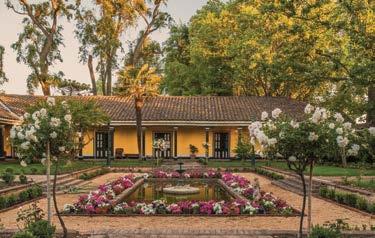
2334
CORNELLANA WINEMAKERS
SELECTION BARREL RESERVE, CARMENÈRE, CACHAPOAL VALLEY, 2019
Carmenère

Intense aromas with bell pepper and green leaves over fruit. On the palate, red fruits and cherries emerge to complement the savoury character creating a rich supple wine. It is medium bodied with dark fruits and nuts on the finish.
Mild-spiced lamb kebabs with mint and coriander
Antiyal is a small family estate located in the Maipo Valley just south of Santiago. It has been fully biodynamic since Alvaro Espinosa and his wife Marina planted their first vines in 1996. Indeed, Alvaro is considered to be one of the leading practitioners of biodynamic viticulture in the world. Alvaro farms 10 hectares of premium black varieties on rocky soils in the foothills of the Andes. He thinks of the vineyard and its surroundings as a living organism: biodiversity is encouraged and the natural rhythms of nature are respected. The wines produced are refined and subtle – yet powerful. The estate is certified both organic Ecocert and biodynamic by Demeter.

2336
2337
2338
Sauvignon
Not a flashy Cabernet Sauvignon but seductive and powerful, the 2019 is quite restrained on the nose with great depth and length on the palate. Some grass and plum aromas precede a supple medium-bodied palate. The wine builds in the mouth to a crescendo of dark fruits, blackcurrants and blackberries complemented by savoury spices.


Alvaro was previously Head Winemaker at Viña Carmen and bottled the first ever 100% Carmenère wine in Chile. Cuttings of Carmenère brought from Bordeaux in the 19th century had been mistakenly identified as Merlot for years – until 1994 when a visiting French researcher spotted the error. Pura Fe 2019 Carmenère has a rich mellow aroma with dark fruits, blackberries and chocolate. It is medium bodied with a fine silky texture with more bitter cherry and chocolate flavours emerging and lingering on the finish.

Intense cassis, strawberry and cherry aromas continue onto the palate and are complemented by bitter cherry and savoury notes. This is a smooth-medium bodied wine with lots of flavour.

Alvaro Espinoza and Marina Ashton, the owners and winemakers of Chile’s Antiyal winery, both studied wine in Bordeaux.
Alvaro got his Diplôme national d’œnologue and Marina a degree in history. Their time in Bordeaux allowed them to discover smaller wineries, a rarity in Chile back then, and encouraged them to dream about starting their own winery. In 1996, they bought a two-acre vineyard in Maipo, next to Alvaro’s former employer Viña Carmen.

After spending time learning about Maipo soils – known for the best red blends in Chile – they decided that it was the perfect place for Antiyal. Located in the central part of Chile, near the capital of Santiago, the Maipo Valley is surrounded both by the Andes mountains and the Coastal Range. Antiyal is situated in the foothills of the Andes at 600
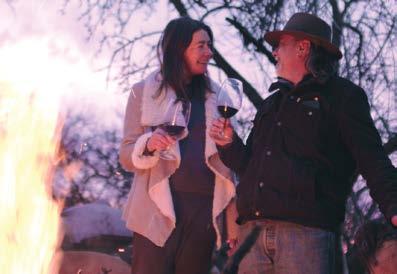

metres of altitude with basaltic soils with the mother rock Andecita. The climate is influenced by the mountains with cold nights, with more than 20°C of difference between day and night.
Antiyal is often referred to as a garage winery, an expression originating from Bordeaux. It was coined in the early 1990s to describe a 0.6-hectare parcel from a Château in Bordeaux that was recognized to produce some very fine wines. “Back in
1996, when we planted our two acres, I think we were the only place to be so small that we handcrafted our wines. Luckily today, you can find many small projects, but in those years, it didn’t exist in Chile, just big wineries,” says Alvaro.
Antiyal is a certified organic and biodynamic vineyard and Alvaro is a pioneer in Chile. Biodynamic farming observes and uses the forces of nature to intensify soil and plant life – an approach that is based on the 1924 work of the philosopher Rudolph Steiner. In biodynamics, the winegrower goes beyond organic farming techniques. He takes the pulse of the elements that surround him and integrates them into a global vine-toglass approach that considers everything in the ecosystem. “Being certified biodynamic gives us the confidence that our customers can be sure of what they are enjoying. It’s been hard economically, but we have made this effort since the year 2000, to certify our wines and agriculture in a sustainable way, which is the way we feel agriculture should be: clean, regenerative, and viable in the future. We want to reassure our clients about what they are drinking,” says Alvaro.
Since its introduction to Opimian in 2018, Antiyal has developed a cult following among Opimian Members, who recognize the quality of these premium and unique Chilean wines. While some wines define a country, a region or even a style, those who are dedicated and committed to Antiyal wines embrace Alvaro’s wine principles – handcrafted wines that express the purity of the fruit and the terroir, with minimal handling and while respecting the natural process.
Syrah, Cabernet Sauvignon, Carmenère, Petit Verdot

$ 56.00 $ 336.00
A rich full-bodied wine with layers of texture and flavour, it was one of my highest scoring wines in the tasting. On the nose spicy oak, vanilla, nutmeg and a touch of pencil lead act as seasoning over dark plummy fruits and with time these aromas will integrate fully. On the palate, sweet dark fruits, blueberries, cassis and blackberries are complemented by smoke and vanilla spices. Produced from a blend of Syrah, Cabernet Sauvignon, Carmenère and Petit Verdot from older plots.
2340 ANTIYAL, VALLE DEL MAIPO, 2018
Carmenère, Cabernet Sauvignon, Syrah
$

A rich smooth wine, seamless from start to finish: hints of mint and tarragon complement black cherry aromas. On the palate, succulent fruits, ripe cherries and vanilla are bound together with fresh cassis flavours which linger. It has a supple velvet texture with great poise and the potential for cellaring for some years. It was matured for 18 months in French oak barrels using 50% new oak, with a small amount matured in concrete egg tank.

Aged white Cheddar

Youthful floral aromas of grape skins and violets are reminiscent of harvest aromas and transport me back to the winery. On the palate, plummy flavours combine with blackcurrants and lead to savoury herbal notes with tarragon. This is a structured wine, silky in texture with great length. The late-ripening Carmenère was harvested at the end of April. After fermentation, it was matured in a concrete egg with no use of oak.

LAS VELETAS CABERNET SAUVIGNON - CABERNET FRANC, VALLE DEL MAULE, 2018
Cabernet Sauvignon, Cabernet Franc
$ 32.00 $ 192.00

I just love this wine. Brick ruby in colour, it is showing some development with a mellow bouquet with cooked fruits, vanilla and damson jam perfectly melded. On the palate, it is supple with a silky layered texture followed by bitter cherry and smoky notes on the finish. Persistent and very moreish. A very long season in San Javier meant grapes were harvested the last week of April in 2018. It is a blend of 60% Cabernet Sauvignon, 40% Cabernet Franc and was matured in French oak barrels for 12 months.

The Maule region is an historic winemaking region located 400 kilometres south of Santiago where old vineyards of País and Carignan can be found. In San Javier, Raul Dell’Oro has worked to recover old vine stocks at the same time as planting new vineyards using the latest technology. His vineyard is located on lower coastal range hills at between 175 and 250 metres on granitic soils with some red clays and slate. Partnering with winemaker Rafael Tirado, the Las Veletas wines were initially made for family and friends.

2345 LAS VELETAS PETIT VERDOTCABERNET FRANC, VALLE DEL MAULE, 2019
Petit Verdot, Cabernet Franc $ 34.00 $ 204.00
A medium-bodied wine with quite a light mid palate and a pronounced acidity typical of Petit Verdot. Floral notes with lint, leather and some ash are followed by flavours of dried raisined figgy fruits and a grippy finish. The wine improves with some aeration becoming richer and more structured.
2342 LAS VELETAS CABERNET SAUVIGNON, VALLE DEL MAULE, 2018
Cabernet Sauvignon

$ 31.00 $ 186.00 NEW
A medium-bodied Cabernet Sauvignon with some nicely developed character making it perfectly ready for drinking over the next few years. Aromas of woodlands, coal and dark fruit lead to more currants and raisins on the palate. It has a tangy cherry freshness with vanilla notes.

Grilled hanger steak with braised greens and garlic scapes
2343 LAS VELETAS PAÍS, VALLE DEL MAULE, 2019 País
$ 32.00 $ 192.00
Pale translucent ruby in colour with savoury herbal aromas of sage, dried thyme and rosemary. It is light bodied with a supple mid palate. The herbal notes are complemented by redcurrant flavours with a soft finish. Old vines of País, planted in 1915, were picked by hand and grapes fermented in stainless steel with no use of oak.

The Echeverría family have been an integral part of Chile’s wine trade for years. The vineyards and house at Molina in the Curicó Valley occupy the same location as they did nearly 100 years ago. Having said that, the family thrives on developing new ideas and techniques. Roberto Junior is chief winemaker and makes reds which are traditional in style. His father, Roberto Senior, was the driving force behind producing sparkling wines. Viña Echeverría is “Certified Sustainable Wine of Chile,” and the family’s latest project is making natural wines.
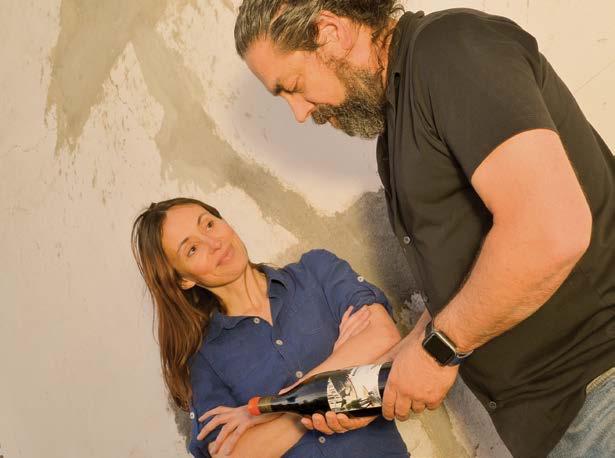
PRODUCER FOR THIS CELLAR



Salmon pink in colour, Luminos has linty floral aromas offset by a savoury note. A touch of sweetness is balanced by its crisp acidity and flavours of fresh apples.
Restrained in aroma, it has some violet notes which lead to a savoury palate with liquorice, some meaty flavours and black fruits. It is light to medium bodied with a bitter damson finish. A new label design was introduced for Casa Nueva wines for the 2020 vintage based on paintings by Roberto Jr’s grandmother and set in the vineyards.

What’s in your cellar? As usual, here are some suggestions from this Cellar to help you diversify your wine choices. You’ll need some sparkling for those celebrations that invariably sneak up on us (even when celebrating with just your immediate household) and a rosé from C282 that will arrive just in time to sip on the deck in the dog days of summer (remember them?). You can’t go wrong by ordering a premium Opimian spirit to lift your spirits. Cheers!
Pairs with anything, celebrations, romance
CORNELLANA CHARDONNAY BRUT
SPARKLING WINE, CACHAPOAL VALLEY, 2020, LOT 2324, P31
LIGHT WHITE
White/light fish, sipping on its own
PINOT GRIS RÉSERVE, AOC ALSACE, 2019, LOT 2290, P9
Poultry, mild cheeses, pork
ACORDEÓN CHARDONNAY, ESTATE GROWN, GUALTALLARY, 2020, LOT 2316, P25
Dessert, rich foods like foie gras
CASA NUEVA LATE HARVEST SAUVIGNON BLANC, NOBLE BOTRYTIS, CURICÓ VALLEY, LIBRARY SELECTION, 2015, LOT 2360, P49




...AND FOR YOUR BAR
Gin
TAPAUS TERRIER GIN PINK SPECIAL EDITION, MENDOZA, LOT 2303, P54

Most appetizers, sipping on its own, the back deck
FUEGO BLANCO VALLE DEL SILEX
CONTRAVIENTO MALBEC ROSÉ, VALLE DEL PEDERNAL, SAN JUAN, 2020, LOT 2298, P14
Many pastas, pork, poultry, sipping on its own
LAS VELETAS PAÍS, VALLE DEL MAULE, 2019, LOT 2343, P41
Versatile; many meats without heavy sauces, casseroles
EXPRESIÓN RESERVE PINOT NOIR, CASABLANCA VALLEY, 2019, LOT 2363, P51
Heavy stews, many game meats, lamb, strong cheeses, even dessert
KUYEN, VALLE DEL MAIPO, 2019, LOT 2339, P39





Cabernet Sauvignon
$ 27.00 $ 162.00


Characterized by fresh grass and spices on the nose with more crushed fruits, red cherries and loganberries on the palate.

A medium-bodied mellow wine with aromas of tarragon, green pepper, coconut and marzipan. It has a soft juicy palate with red cherry flavour and a woody cherry menthol finish. Grapes were fermented in tank at controlled temperature with an extended skin maceration. The wine was then aged 10-12 month in French oak barrels. The new label depicts the local train station which Viña Echeverría has been instrumental in renovating and which has helped to revitalize local businesses, bringing visitors from Santiago to Molina.

2355

HACIENDA DE MOLINA GRAN
RESERVA CABERNET SAUVIGNON CARMENÈRE, CURICÓ VALLEY, 2019
Cabernet Sauvignon, Carmenère
Intense oak aromas with pencil lead, coconut, pine and menthol over red cherries. It has an immediate oaky astringency on the palate with red fruit flavours emerging adding mid-palate succulence leading to a chewy finish.
2021-2024, M7 D8
$ 25.00 $ 150.00
Brimming with mixed berry fruits, it has aromas of raspberries and mulberries with vanilla and pencil lead. On the lighter side of medium bodied, it is soft and smooth on the palate. It has a fine texture with balsamic and sour raspberry flavours. The majority of the blend is Cabernet Sauvignon with 10% Petit Verdot and 5% Cabernet Franc. It spent eight months in new French oak barrels.
2021-2023, M8 D9
mulberries, pencil lead 18°C
Mixed berries, vanilla 13.5%
Roasted mushrooms and shallots on creamy polenta

2358
2357
Cabernet Sauvignon

A youthful wine with intense aromas of coconut, vanilla, red cherries and black pepper. It is medium bodied with vibrant flavours, some cut-grass notes, a warm balsamic character and a long oaky finish. Litueche is an emerging coastal area and subregion of Colchagua Valley which enjoys a cooler climate than Curicó Valley and produces vibrant wines. It was matured 15-18 months in French oak barrels with 25% new.
READ ABOUT ECHEVERRIA’S UNIQUE LABEL ART ON THE NEXT PAGE


A concentrated flavoursome wine with blackberry aromas and more dark fruit flavours. It is quite linear in structure with good depth and a persistent and tart fruit finish. Grapes were grown in Molina and were fermented by wild yeast with no use of added yeasts, sulfites, filtration or cold stabilization from start to finish – there is a natural sediment in the bottle and the wine may look cloudy.
2359
CASA NUEVA FAMILY RESERVA CABERNET SAUVIGNON, CURICÓ VALLEY, LIBRARY SELECTION, 2015
Cabernet Sauvignon $ 36.00 $ 216.00 NEW

An opportunity to taste how Echeverría wines mature: this has an intense mellow bouquet with blackcurrants and vanilla oak. It has a grainy texture with some firm astringent tannins giving it a rustic feel. As a counterpoint, the mid palate has some nice fruit and balsamic notes.


CASA NUEVA FAMILY WINES SELECTION MERLOT, CENTRAL VALLEY, 2020, LOT 2348, P45
LA BALIZA COOL CLIMATE SYRAH, COLCHAGUA/ LITUECHE, 2018, LOT 2358, P47




DID YOU KNOW?
According to a 2015 survey, millennials are four times more likely than older generations to buy a wine based on its label design. Viña Echeverría has redesigned the labels for several of their Opimian favourites and created gorgeous labels for two of their new products, and we love them! OK, Boomers?

Roberto Echeverría’s grandmother was a prolific painter. Adriana Piffre de Vauban, aka Meme, mainly painted scenes of rural Chile and produced a total of 80 oil paintings in her lifetime, including ones of the family house, vineyards and train station in Molina. It was an easy choice to use one of them on the new labels for this iconic line of wines. Opimian even featured the label’s painting of Roberto’s brother Diego, walking through the vineyards on the Cellar 264 cover. The Casa Nueva Family Wines Carmenère (lot 2347), Merlot (lot 2348) and Syrah (lot 2349) make a beautiful tableau of bottles.

The label for La Baliza Cool Climate Syrah (lot 2358) spotlights the art of Roberto’s sister, Paulina. Mucho talent among the females in this family! Besides art and wine, Pauli’s passion is open water swimming, something she partakes in every weekend, mainly off the Pacific coast. A Baliza is a buoy, and it’s where the swimmers congregate to check in on each other.

Another woman, another artist. This time it’s Roberto’s wife, Julia Soward, a Brit who studied in France. She met Roberto at a wine tasting, and love struck them both (wine will do that to you!). Two children later, she has taken up art again as an illustrator and graphic designer. The El Barrio (or neighbourhood) label concept was drawn during the Covid pandemic. After looking out the window of their Santiago apartment over the past six months, Julia came up with this view of their own little corner of the world
The El Barrio Cabernet Sauvignon (lot 2357) is a natural wine and natural wine labels are fun to design because anything goes. For Julia and for a lot of people, the natural wine movement is like a mini representation of a wider social consciousness—one that values authenticity, creativity, acceptance of diversity, and one that challenges our perceptions. It’s fun to drink too!
2360
CASA NUEVA LATE HARVEST SAUVIGNON BLANC, NOBLE BOTRYTIS, CURICÓ VALLEY, LIBRARY SELECTION, 2015
Sauvignon Blanc

Golden yellow in colour, it also has the aroma of golden syrup with a touch of fresh white button mushrooms, earth and iodine giving complexity. Its sweetness is countered by a marked sour-lemon acidity keeping it vibrant on the palate with a fresh apple finish. Four successive pickings of Sauvignon grapes affected by noble rot were carried out between May 29 and June 25, 2015. After fermentation it was transferred and matured in French oak.
2021-2025, M8 D9
Golden syrup, champignons de Paris 6°C
Lemon, apples, earth, [S] 13%
Pollo arvejado Chilean chicken stew

Thierry Villard established one of the first boutique wineries in Chile in the cool Casablanca region in 1989. Situated 25 kilometers from the Pacific Ocean, the sea has a cooling effect on the Casablanca Valley, producing morning fog and keeping temperatures low – conditions perfect for growing flavoursome grapes. Jean Charles has taken over responsibility for winemaking from his father and has expanded the range and style of wines produced to include some natural orange wines. For his part, Thierry’s son Sebastien, a trained cooper, runs Nadalié cooperage in Santiago and supplies the high-quality oak used to season and mature Villard wines.

2362
EXPRESIÓN RESERVE SAUVIGNON BLANC, CASABLANCA VALLEY, 2020
Sauvignon Blanc

$ 30.00 $ 180.00
Tasted as a tank sample, yeasty leesy aromas lead to a succulent palate with lots of fruits, including mango, peaches, limes and passionfruit. Soft and smooth with a nutty finish. Grapes were harvested on March 13 and left on fine lees for nine months (hence, the tank sample) with regular stirring. It will be bottled in January, 2021.
2363
2364
EXPRESIÓN RESERVE SYRAH, CASABLANCA VALLEY, 2019
Syrah
$ 30.00 $ 180.00
2021-2025, M7 D9
Ripe and cooked forest fruits, cassis, vanilla 18°C
Blueberries, spearmint, spicy oak 14.5%
Roasted pork with plum sauce
EXPRESIÓN RESERVE PINOT NOIR, CASABLANCA VALLEY, 2019
Pinot Noir
$ 31.00 $ 186.00
Intense cherry aromas combine with other fresh red fruits and a touch of sage to create a mellow bouquet with nice depth. It is supple and juicy on the palate with a creamy texture exuding cranberry and cherry fruit and a long raspberry finish. Pinot Noir vines are cultivated on clay loam hillsides. Grapes were harvested by hand at the end of February and underwent a cold maceration before fermentation. It was matured in a combination of French oak barrels, large oak “foudres” and stainless steel tanks.


CHECK OUT VILLARD’S PREMIUM TANAGRA SYRAH, PAGE 55
Another showstopper of a wine, it is a dense purple colour with aromas of ripe and cooked forest fruits, cassis, vanilla, pâtisserie, blackberries, blueberries and a touch of spearmint. It is medium bodied with some spicy oak flavours and grip on the finish. Handpicked nearly two months later than the Pinot Noir, it was matured 65% in oak for six months with the balance in tank.


A strict selection of the best parcels of grapes go into the Grand Vin wines. Subtle aromas of oak spices, woody and vanilla notes over peaches and custard combine to great effect. This is a mediumbodied Chardonnay with flavours of passionfruit and mango making themselves known on the palate. It is textured and fine with layers of flavour and a lingering persistence. Nice to drink now, it is not yet at its peak. Matured in French oak barrels and large foudre for 11 months.

A little subdued in the tasting – the wine had only been in bottle for several months –with aromas of plums and red cherries. It is soft and supple on the palate with red cherry flavours complemented by a savoury edge. It is medium bodied, with a supple mid palate, tight but should develop nicely finishing with dark chocolate and vibrant red cherry flavours. Matured in French oak – 25% in older barrels and 75% in large foudre.
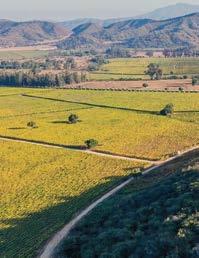
2369 JCV CHARLIE VILLARD SEMILLON, CASABLANCA VALLEY, 2019
Semillon
$ 38.00 $ 228.00
A natural wine made from 100% Semillon, the 2019 is a golden-yellow colour with aromas of dried chamomile blossoms and lanolin. More white fruits emerge on the palate which is supple and layered. Grapes were harvested by hand and then left for seven days to macerate at low temperature. Native wild yeast carried out the fermentation in tank on the grape skins for one month. At 11.5% alcohol, the style is reminiscent of wines from the Hunter Valley. The wine is unfiltered and may show a deposit or become cloudy.
Smoked trout with braised leeks


2368
JCV CHARLIE VILLARD RAMATO PINOT GRIGIO, CASABLANCA VALLEY, 2019
Pinot Grigio
$ 38.00 $ 228.00
Orange wines have become a bit of a thing in recent years. I must admit that the majority of them have left me unstirred. And then, occasionally, I come across a wine like JC’s Ramato and it all makes sense. Vibrant orange in colour, it has aromas of burnt caramel, earth and floral notes with just a touch of sulphide. The palate is even more interesting with its layered texture and spicy flavours with orange and honeysuckle and a lingering marmalade character. Orange wines are basically wines made from white grapes using the same technique as for reds: in other words, extended time on grape skins and in this case two months. No use of oranges or other citrus!


Casa Tapaus is a small boutique distillery located in Mendoza and owned by JJ Millán. Tapaus means “hidden treasure” in the native language of the Huarpes, an indigenous people of Argentina. The distillery produces brandy, gin, grappa and other spirits. In my tasting, the Pink Terrier Gin stood out and showing it to friends and family was a clear winner. Delightfully pink in colour, it has immediately appealing aromas of orange blossom, caramelized orange, mandarin and floral notes. Made in the foothills of the Andes Mountains, it uses 12 botanicals with fresh pink grapefruit peel, juniper berries, three kinds of pepper, cinnamon sticks, lemon peel and dry cloves. Some Malbec juice is added after distillation to get the balance between sweet and sour/bitter. The pink colour comes from infusion with hibiscus flowers at the end of the process.

Intensely concentrated aromas of cassis, redcurrants, strawberry jam and vanilla precede a smooth elegant palate. This wine has a fine silky texture with more flavours of chocolate and vanilla, black cherries and a savoury character developing on the palate. Everything possible was done by JC when crafting this wine – handpicked grapes from untrellised bush vines were crushed by hand into barrel. After a cold maceration for seven days, the wine was fermented at 28-300C in barrel and left for a total of 30 days on skins. It was then matured for 18 months in barrel using a combination of American and French oak and 80% new. Despite the long oak regime, the sheer concentration of the grapes’ fruit flavours shine through.
Each bottle will be personally signed by the winemaker for Opimian Members.


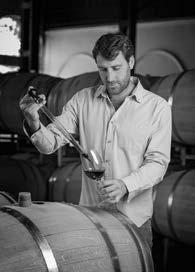

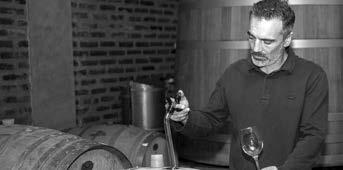

Having trouble deciding which wines to order from C282? Want to learn more about the winemakers you already love? Do you have burning questions to ask them? Or do you simply want to relax and “get away” for a bit behind your screen?
From the comfort of your home, join us to meet the people behind the wine. Check your inbox, invites are coming soon! You can also check out upcoming events on the Events page of the Opimian website.



300-2170 RENÉ-LÉVESQUE WEST

THROUGHOUT THE CELLAR OFFERING WE’LL FEATURE SEVERAL OF THE WINEMAKERS.
DON’T MISS OUT! follow us opimianwineclubdevin
check your inbox events@opimian.ca
